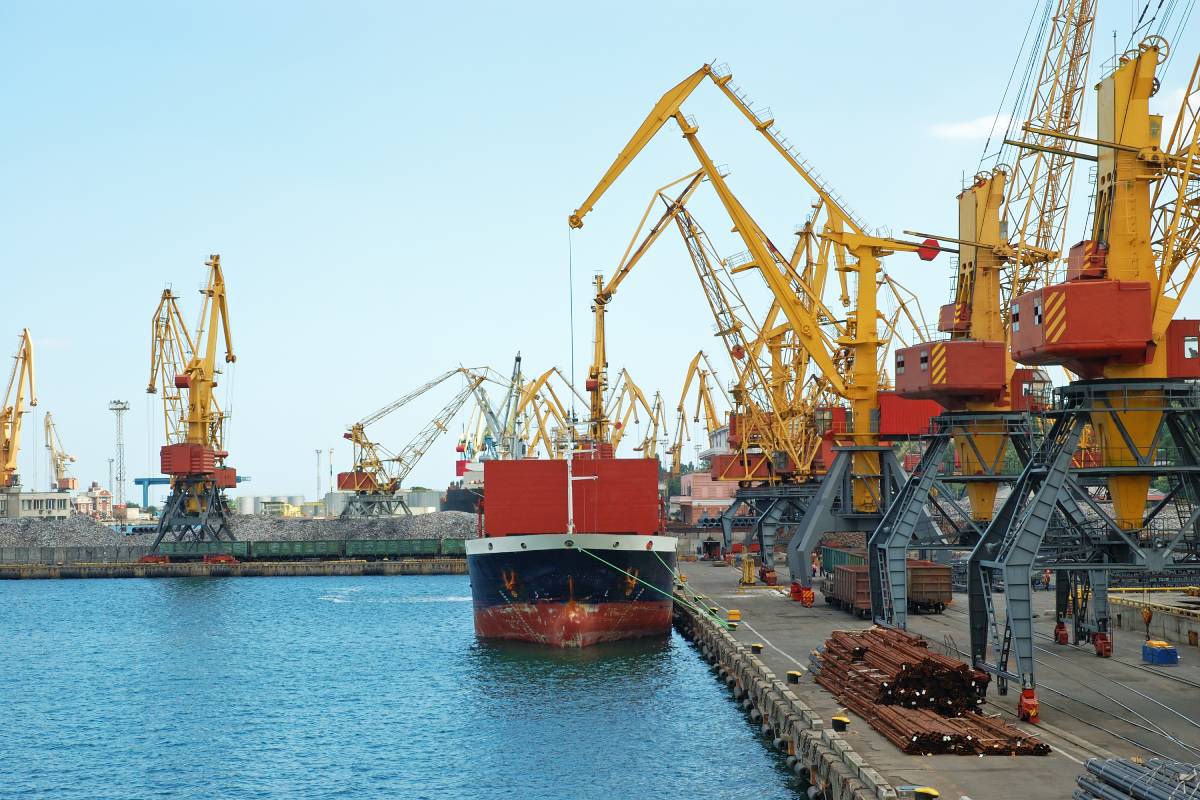
In the intricate landscape of international trade, navigating terms like FOB, CIF, and the decision-making process surrounding them can be like deciphering a code.
Whether you’re a seasoned business professional or just stepping into the world of cross-border transactions, understanding the fundamentals is key to making informed choices.
In this guide, we’ll unravel the meaning behind FOB and CIF, shedding light on their implications and helping you make strategic decisions that align with your business goals.
What is FOB?
FOB Defined: At its core, FOB is a shipping term that defines the point at which ownership and responsibility for goods transfer from the seller to the buyer. The term is often followed by a location designation, such as FOB Origin or FOB Destination, indicating where this transfer of ownership occurs.
FOB Origin vs. FOB Destination:
- FOB Origin: If a shipment is labelled as FOB Origin, ownership shifts from the seller to the buyer the moment the goods are loaded onto the transport vehicle at the seller’s location. The buyer is responsible for the transportation costs and risks from that point forward.
- FOB Destination: On the other hand, FOB Destination implies that ownership changes hands when the goods arrive at the buyer’s designated destination. In this case, the seller bears the responsibility and costs of transportation until the goods reach the agreed-upon location.

Key Points to Understand
1. Ownership Transfer:
- FOB indicates the precise moment when ownership of the goods transitions from the seller to the buyer.
2. Transportation Costs:
- For FOB Origin, the buyer covers transportation costs from the seller’s location.
- With FOB Destination, the seller is responsible for transportation expenses until the goods reach the buyer’s destination.
3. Risk Allocation:
- FOB determines when the risk of loss or damage shifts from the seller to the buyer. This is crucial for insurance purposes and understanding who is responsible in case of unforeseen events during transit.
4. Importance of Clear Terms:
- When entering into a trade agreement, it’s essential to specify whether the terms are FOB Origin or FOB Destination to avoid misunderstandings and ensure a smooth transaction.
Why FOB Matters
1. Cost Management:
- Understanding FOB terms helps businesses manage and allocate transportation costs effectively, preventing unexpected financial burdens.
2. Risk Mitigation:
- By knowing when ownership and risk transfer occur, both parties can take appropriate measures to mitigate potential losses, such as securing insurance coverage.
3. Legal Clarity:
- Clearly defining FOB terms in contracts ensures legal clarity, minimizing disputes and promoting a transparent business relationship.
FOB is a fundamental concept in international trade that simplifies the complex process of transferring ownership and responsibility for goods. Whether FOB Origin or FOB Destination, grasping these terms empowers businesses to navigate the intricacies of global commerce with confidence and clarity.

Is Free On Board and Freight On Board the same thing?
While both “Free On Board” (FOB) and “Freight On Board” (FOB) are shipping terms used in international trade, they have distinct meanings. It’s important to understand the differences between the two to ensure clarity in business transactions.
Free On Board (FOB)
-
- FOB primarily relates to the point at which ownership and risk transfer from the seller to the buyer. It indicates the location where the goods are considered “free” from the seller’s responsibility. There are two common variations: FOB Origin and FOB Destination.
- FOB Origin means that ownership transfers to the buyer as soon as the goods are loaded onto the transport vehicle at the seller’s location. The buyer is responsible for transportation costs and risks from that point onward.
- FOB Destination signifies that ownership changes hands when the goods arrive at the buyer’s specified destination. In this case, the seller bears the responsibility and costs of transportation until the goods reach the agreed-upon location.
Freight On Board (FOB)
-
- FOB, when referring to “Freight On Board,” is a broader term that includes additional considerations beyond the transfer of ownership. It specifically addresses the point at which the costs and risks associated with shipping (freight) transfer from the seller to the buyer.
- Similar to FOB, Freight On Board has two common designations: FOB Origin and FOB Destination. The key distinction lies in the responsibility for freight charges and risks during transportation.
Key Differences
- While FOB is primarily concerned with ownership transfer, Freight On Board encompasses both ownership transfer and the transfer of responsibility for freight costs.
- FOB is a more specific term that may refer to ownership transfer at a specific location, while Freight On Board is a broader term that emphasizes the transfer of freight-related responsibilities.
In summary, Free On Board and Freight On Board are related concepts used in international trade, but they differ in their scope. FOB is more specific, focusing on ownership transfer, while Freight On Board encompasses both ownership transfer and the transfer of responsibility for freight-related costs and risks. It’s crucial for businesses to clearly specify the terms in contracts to avoid misunderstandings and ensure a smooth international trade process.
What is CIF? Should I buy CIF or FOB?
What is CIF?
CIF stands for Cost, Insurance, and Freight. It’s a shipping term that indicates the total cost of goods, including transportation, insurance, and certain other expenses, up to the designated port of destination. When a buyer agrees to CIF terms, the seller takes responsibility for these costs until the goods reach the specified port.
Breakdown of CIF Components
- Cost (C): This includes the price of the goods and all associated costs up to loading them onto the transport vessel.
- Insurance (I): The seller provides insurance coverage for the goods during transit to protect against loss or damage.
- Freight (F): The seller arranges and pays for the transportation of the goods to the agreed-upon port of destination.
Should I buy CIF or FOB?
1. Consideration of Costs
- CIF: Buyers opting for CIF enjoy a more inclusive package where transportation and insurance costs are covered by the seller. However, it’s important to note that these costs are usually factored into the overall price, potentially making the goods more expensive.
- FOB: With FOB, the buyer takes charge of transportation costs from the seller’s location. This might allow for more flexibility in choosing transportation methods and potentially lower costs.
2. Risk Allocation
- CIF: Sellers bear the risk until the goods reach the destination port. If there is loss or damage during transit, it’s the seller’s responsibility to handle the insurance claim.
- FOB: In FOB transactions, the risk shifts from the seller to the buyer at the point of loading. This means the buyer needs to secure insurance coverage for the goods during transit.
3. Flexibility and Control
- CIF: Buyers relinquish control over the shipping process to the seller. While it provides convenience, it may limit the buyer’s ability to choose specific carriers or shipping routes.
- FOB: Opting for FOB gives buyers more control and flexibility in managing transportation logistics. They can select their preferred carriers and routes.
Making the Choice
1. Consider Your Risk Tolerance
- If you prefer the seller to handle risks and insurance, CIF might be suitable.
- If you want more control and are willing to manage risks, FOB could be a better fit.
2. Evaluate Total Costs
- Compare the total costs under CIF and FOB to determine the most cost-effective option for your business.
3. Assess Logistics Preferences
- Consider how much control you want over the shipping process and whether you have specific preferences for carriers or routes.
Conclusion
As we conclude our exploration into the realms of FOB and CIF, it becomes clear that these shipping terms hold significant weight in the world of international trade. The decision between FOB and CIF involves a careful consideration of costs, risk allocation, and logistical preferences. While CIF provides a comprehensive package with the seller managing transportation and insurance, FOB offers flexibility and control to the buyer.
Ultimately, the right choice depends on your business priorities, risk tolerance, and the level of involvement you seek in the shipping process. Armed with this knowledge, you can approach cross-border transactions with confidence, ensuring a seamless and strategic approach to international trade.


